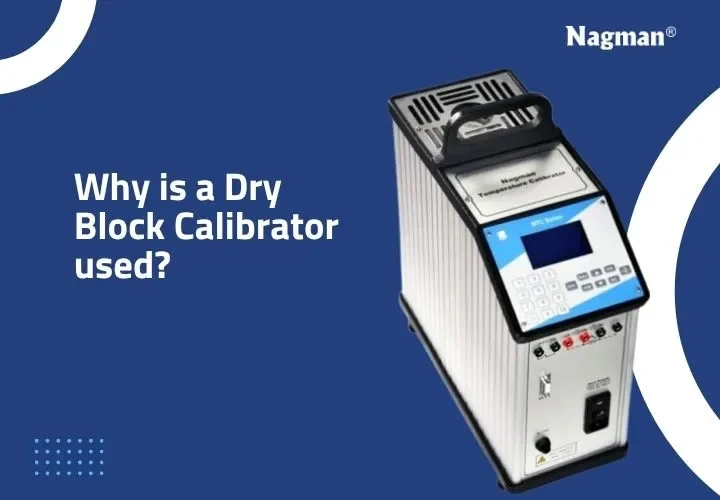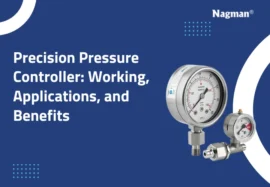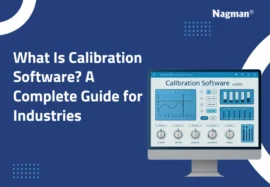In industries where temperature control is crucial, such as medicine, food processing, energy, and manufacturing, precise temperature measurement can make the difference between success and failure. This is where dry block calibrators come into play.
What is a Dry Block Calibrator?
A dry block calibrator is made of a metal block that may be heated or cooled to a specified temperature. This block has several wells or holes where temperature sensors (such as thermocouples, RTDs, or thermistors) can be inserted. Internally, a highly responsive microprocessor and heating components keep the temperature steady, allowing operators to compare the sensor’s reading to a known value.
This procedure guarantees that sensors operate within acceptable error limits, hence assisting companies in maintaining safety, quality, and standard compliance.
Dry block temperature calibrators
Dry block temperature calibrators, also called dry well calibrators, come with metal inserts that have holes drilled in them for inserting temperature sensors. These holes are of different sizes, and the metal insert can be removed outside as well. In this setup, the temperature sensors are near the metal, which is in close proximity to the temperature source. These calibrators provide very accurate and reliable results and are most preferred for temperature calibrations.
Nagman has a wide range of high-quality dry block temperature calibrators that can be used in various situations or needs, like low temperature, medium temperature, high and very high temperature. There are also dual dry block calibrators available that are equipped to calibrate instruments for both lower and higher temperature levels.
Features of dry block calibrators
- Dry block calibrators can be used to calibrate temperature devices with a really wide range of temperatures. Some calibrators can be used for -40 ° Celsius to 100 ° Celsius or more. You can also find Dual dry block calibrators that can calibrate a temperature range of -100 ° Celsius to 350 ° Celsius.
- In a dry block calibrator, anywhere between 10 to 40 sensors can be calibrated at a time. However, overloading the sensors in a dry block is not recommended. Even so, if not for a dry block calibrator, no more than 2- 3 sensors can be calibrated at a time.
- Dry block calibrators are also very heavy-duty duty portable, bench-top models that can be used for rugged field calibrations as well as in-house calibrations. It is always safe to have a model of a calibrator that can be carried to the site for quick calibrations at the site.
- Since they are portable, dry block temperature calibrators come with digital displays, which means that the results are highly accurate and reliable. This accuracy level can also be increased using an external reference called a platinum resistance thermometer (PRT).
Why Choose a Dry Block Calibrator?
Portability and Speed
Dry block calibrators are portable and intended for field application. Technicians may transport them to various areas, decreasing downtime and eliminating the need to remove equipment from its current location. Warm-up and cool-down times are typically shorter than those for liquid bath systems.
Clean and Maintenance-Free
Dry blocks, unlike liquid-based systems, do not include oil or water, reducing the danger of spillage, contamination, and evaporation. This makes them appropriate for businesses with high hygiene standards, such as pharmaceutical manufacturing and food safety.
Versatility
Modern dry block calibrators may operate at temperatures ranging from below zero to over 650°C. They can support various sensor types and sizes with interchangeable inserts, providing maximum flexibility in calibration methods.
High Accuracy and Stability
Advanced models offer good temperature uniformity and stability, making them ideal for field and laboratory calibration. When used with a reference thermometer, dry blocks can provide traceable, high-precision calibration that fulfils international standards.
Compliance and Quality Assurance
Regular sensor calibration with dry block calibrators guarantees compliance with ISO, FDA, and other regulatory requirements. Maintaining accurate temperature records in controlled workplaces is not optional—it is required.
Conclusion
A dry block calibrator is more than just a tool for calibration; it is a reliable collaborator in quality control. With unparalleled portability, clean operation, and dependable performance, it assists industries in avoiding costly errors and remaining compliant with important safety regulations.
Whether you’re in the lab or out in the field, a dry block calibrator keeps your temperature measurements accurate.






